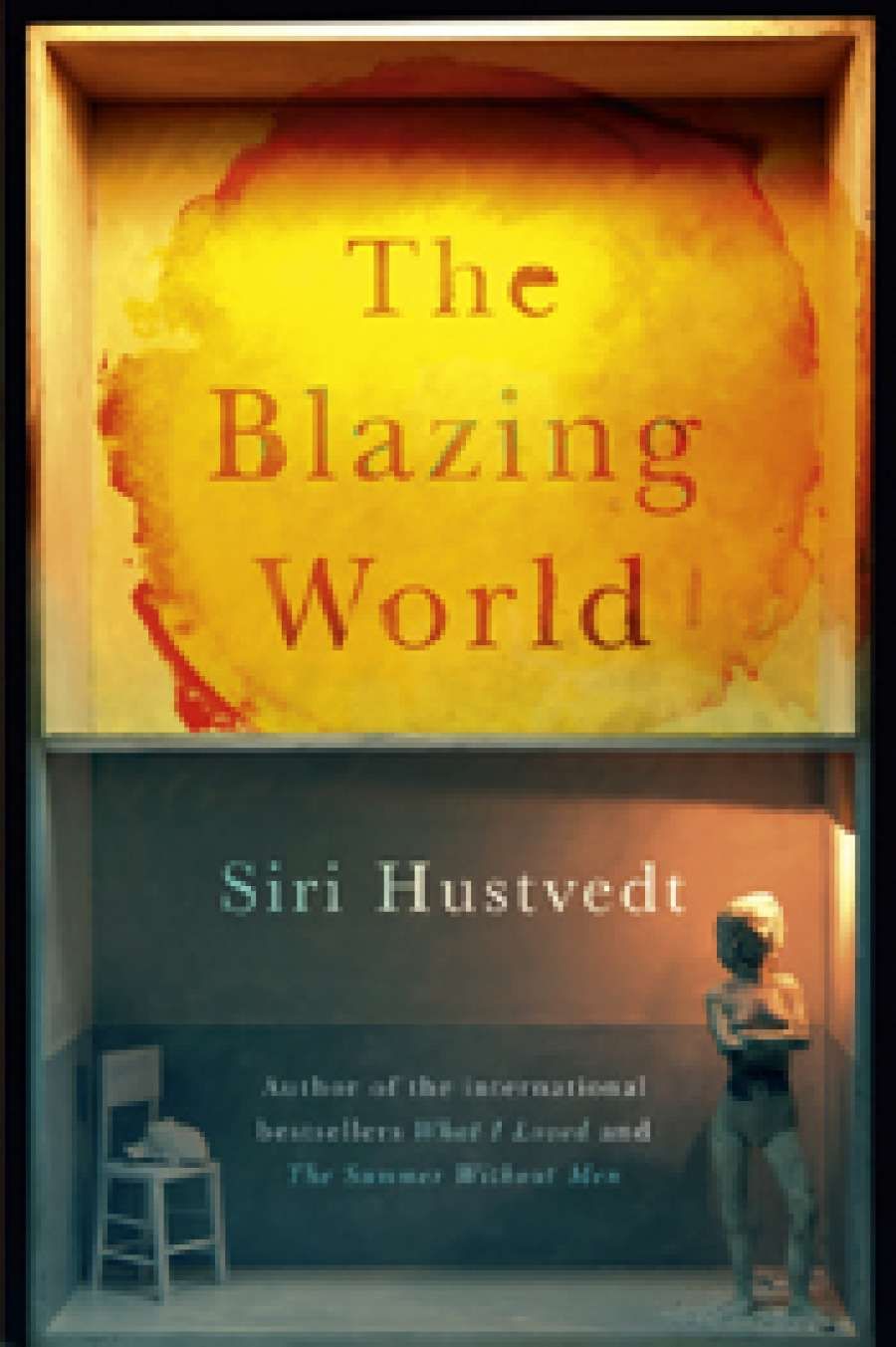
- Free Article: No
- Contents Category: Fiction
- Review Article: Yes
- Article Title: Give him a mask
- Online Only: No
- Custom Highlight Text:
A quote from Oscar Wilde in Siri Hustvedt’s The Blazing World crystallises the novel’s central study of adopted guises: ‘Man is least himself when he talks in his own person. Give him a mask, and he will tell you the truth.’ The book’s protagonist, underappreciated New York artist Harriet Burden, dons a trio of masks when she puts forward her art as the work of three different male artists. But many other masks emerge in Hustvedt’s telling, which takes the form of Burden’s personal notebooks as well as accounts from her assorted friends, family, and critics, all compiled by the fictitious editor I.V. Hess.
- Book 1 Title: The Blazing World
- Book 1 Biblio: Sceptre, $29.99 pb, 379 pp
- Book 1 Readings Link: booktopia.kh4ffx.net/OR0PRG
The Blazing World is not a straightforward narrative by any means, and yet the polyphonic approach is ideal for Hustvedt’s fascination with the pitfalls of perception. It is also easy to digest, thick with layers while retaining a marvellous clarity and sense of purpose. Hustvedt may select a potentially niche backdrop in the New York art scene, but she takes on much more, bringing rich insights to death, parenthood, marriage, work, commerce, and the modern age. She adopts a splintered lens of ‘illusion upon illusion upon illusion’, but, as Wilde noted, such distancing devices can actually bring us closer to the truth. Or, in this case, to competing and relative truths, coexisting in a tangled sort of harmony.
As both a fringe artist and the widow of a famous art dealer, Burden understands the limitations of the art world, yet still she can’t leave it behind. It obsesses her, convinced as she is that her negligible reputation is the result of being the ultimate threat in that male-dominated field: a tall, robust, large-chested woman (and mother) who is exceptionally well read and who speaks her mind fiercely. Men ‘suffocate women’s reputation’, Burden writes, citing the respective statures of Auguste Rodin and Camille Claudel, Pablo Picasso and Dora Maar, and Jackson Pollock and Lee Krasner. Burden’s association with her late husband does indeed overshadow her own art.
That theme is doubly resonant to Hustvedt, whose husband is the well-known novelist Paul Auster. Still, Hustvedt doesn’t make Burden some tidy martyr. While Burden considers herself unjustly ignored, one of her harshest critics paints her as a jaded hack (‘enormous’ and ‘shrill’ at that), and other accounts occupy the wide space between those poles. Hustvedt’s polyphonic approach beautifully teases out these conflicting perspectives. The introduction by Hess even advises us that Burden’s quixotic notebooks may ‘be read as a form of dialogue’, and her speciality is later described as ‘creating works of focused ambiguity’.
 Siri Hustvedt
Siri Hustvedt
(photograph by Marion Ettlinger)
Burden’s experiments with the three male ‘masks’ extend that ambiguity in her work to the entwined creative identity of herself and her collaborators. One of her young masks has the ready-made appeal of being unknown; another is a gay man of mixed race. Each of those details alters one’s reaction to the work. The most problematic mask is that of the rock-star-like artist Rune, whose unwavering confidence, fluid personality, and fabricated back-story reflect the deceptions of social media. Rune is emblematic of his generation in other ways too, thriving on television, video, and technology, while Burden quotes authors from bygone centuries. An upset Burden dubs Rune ‘a lowly jingle’ compared to the work of Emily Dickinson. That stark divide only complicates their ensuing power struggle.
It is not just deceptions that Burden – and, through her, Hustvedt – explores, but whole personas. She examines women writing under male guises, such as sci-fi author Alice B. Sheldon (aka James Tiptree Jr and Raccoona Sheldon), and cites classic fronts ranging from Cyrano to ‘Ern Malley’. The Blazing World repeatedly references Margaret Cavendish, the visionary seventeenth-century English writer who published under her own name at a time when that was extremely rare for a woman, and whose posthumous reputation far exceeds her stature while alive. The book even takes its title from Cavendish’s 1666 book of the same name, whose vision of a utopian ‘new world’ is now considered an early example of science fiction. Burden very much admires Cavendish, but all the same she doesn’t want to wait until after death for her own work to be appreciated.
‘Hustvedt uses Burden’s competing roles – wife, mother, artist, widow – to explore the sheer complexity of personal identity.’
One could accuse Hustvedt of overstated symbolism by giving her protagonist the surname Burden (and her husband the surname Lord) and invoking the nickname Harry for Burden, but she doesn’t merely make those choices and then leave them be. Rather, she uses those choices as a starting point for looking closely at all the blurring that surrounds personal identity and the highly suggestible expectations of others. ‘Harry’ Burden isn’t considered feminine in the traditional sense, and she yearns to assume the role of the dominant male figure rather than the ignored female. Hustvedt uses Burden’s competing roles – wife, mother, artist, widow – to explore the sheer complexity of personal identity.
Hustvedt is known for her lectures and essays on art, and her novel What I Loved (2003) was also set in the art world. Unsurprisingly, her detailed rendering of Burden’s work is utterly convincing. Hustvedt even inserts herself into the book briefly, as ‘an obscure novelist and essayist’, but this doesn’t seem indulgent. Instead, lodged in an essay that Burden has penned under a male pseudonym, it reminds us just how many masks are at work here.


Comments powered by CComment